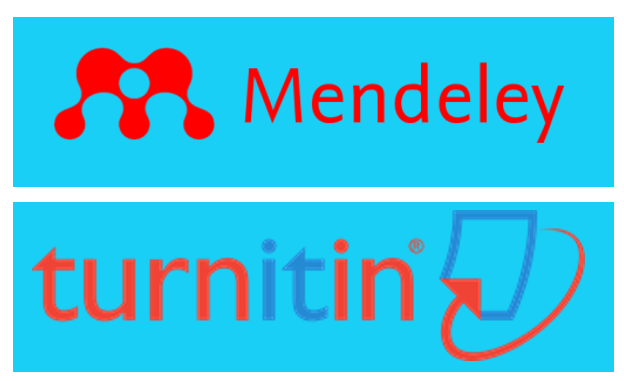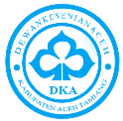Teachers’ attitudes and students’ language preferences on code-switching in English classrooms: A mixed-method study at Instituto São João de Brito, Timor-Leste
DOI:
https://doi.org/10.32734/4fftt356Keywords:
Code-switching, English classrooms, Students’ preferences, Teachers’ attitudesAbstract
This study investigates the role of code-switching in English language teaching at Instituto São João de Brito, Timor-Leste, a multilingual setting where English is taught as a foreign language. Building on existing research highlighting the importance of code-switching in facilitating teaching and learning, this study explores teachers’ attitudes and students’ language preferences in classes where code-switching is employed. A mixed-method approach was adopted, involving four teachers and fifty students who participated in questionnaires and semi-structured interviews. The findings reveal that teachers recognise the value of code-switching in enhancing student understanding, participation, and teaching methods. Quantitative results show that 60% of students are flexible with code-switching, while 90% prefer increased use of English in class. The study’s findings contribute to understanding how code-switching can effectively be utilised in English language teaching practices in multilingual settings, highlighting the need for a balanced approach that promotes linguistic flexibility and English language proficiency. The implications of this study can inform teaching practices and policies in similar multilingual contexts, ultimately enhancing the effectiveness of English language instruction.
Downloads
References
Abdolaziz, R., & Shahla, S. (2016). Teachers and students’ perceptions of code switching in aviation language learning courses. International Journal of Research Studies in Language Learning, 5(3), 3–18. https://doi.org/10.5861/ijrsll.2015.1259
Alsied, S. M. (2018). An investigation of the use of the first language in Libyan EFL classrooms. TEFLIN Journal, 29(2), 155–176. https://doi.org/10.15639/teflinjournal.v29i2/155-176
Alemnew, A., Woldeyohannes, H., & Gaga, W. (2016). Using code-switching in teaching science and English: A comparative analysis concerning junior secondary schools in Addis Ababa. In H. McIlwraith (Ed.), The Abuja regional Hornby School: Language lessons from Africa (pp. 7–22). British Council.
Andika, Y. S. (2018). Lecturers to Indonesian code-switching in introduction to English linguistics and introduction to English literature in English Letters Department classes [Doctoral dissertation, Universitas Sanata Dharma Yogyakarta].
Bagui, H. (2014). Aspects of diglossic code-switching situations: A sociolinguistic interpretation. European Journal of Research in Social Sciences, 2(4), 86–92.
Bhatti, A., Shamsudin, S., & Said, S. B. M. (2018). Code-switching: A useful foreign language teaching tool in EFL classrooms. English Language Teaching, 11(6), 93–101. https://doi.org/10.5539/elt.v11n6p93
Bozorgian, H., & Fallahpour, S. (2015). Language teaching research: Teachers’ and students’ amount and purpose of L1 use: English as a foreign language (EFL) classrooms in Iran. Language Teaching Research, 3(June), 67–81.
Bozorgian, H., & Fallahpour, S. (2020). Exploring L1 use in English as a foreign language classrooms through activity theory. Journal of Teaching Language Skills, 39(3.1), 1–35. https://doi.org/10.22099/jtls.2021.39025.2912
Cook, G. (2010). Translation in language teaching. Oxford University Press.
Creswell, J. W. (2014). Research design: Qualitative, quantitative, and mixed methods approaches (4th ed.). SAGE Publications.
Elias, N. A., Norzaidi, A. I., Sabri, M. I. I. M., Singh, C. K. S., Ramanlingam, S. U., & Maniam, M. (2022). ESL learners’ perceptions of code-switching in the English language classroom. International Journal of Asian Social Science, 12(5), 158–168. https://doi.org/10.55493/5007.v12i5.4494
Fallahpour, H. B. S. (2020). Exploring L1 use in English as a foreign language classrooms through activity theory. Exploring L1 Use in English as a Foreign Language Classrooms through Activity Theory, 35.
Ibrahim, E. H., Shah, M. I., & Armia, N. T. (2013). Code-switching in English as a foreign language classroom: Teachers’ attitudes. English Language Teaching, 6(7), 139–150. https://doi.org/10.5539/elt.v6n7p139
Johansson, S. (2013). Code-switching in the English classroom: What teachers do and what their students wish they did [Master’s thesis, Karlstads Universitet]. https://www.diva-portal.org/smash/get/diva2:691914/FULLTEXT02.pdf
Jose, N., Chakravarthi, B. R., Suryawanshi, S., Sherly, E., & McCrae, J. P. (2020). A survey of current datasets for code-switching research. In 2020 6th International Conference on Advanced Computing and Communication Systems (ICACCS) (pp. 136–141). IEEE. https://doi.org/10.1109/ICACCS48705.2020.9074205
Larson‐Hall, J., & Plonsky, L. (2015). Reporting and interpreting quantitative research findings: What gets reported and recommendations for the field. Language Learning, 65(S1), 127–159.
Minwuyelet, A. (2019). An investigation into the use of Amharic language in English-focused EFL classrooms: Focus on teachers’ colleges in Amhara Region. Journal of Literature, Languages, and Linguistics, 63, 1–16. https://doi.org/10.7176/JLLL/63-02
Murtiningsih, S. R., Munawaroh, M., & Hidayatulloh, S. M. M. (2022). Code-switching in EFL classrooms: Factors influencing teachers to use code-switching and the types used. Journal on English as a Foreign Language, 12(2), 318–338. https://doi.org/10.23971/jefl.v12i2.3941
Nazeri, S., Amini, D., & Salahshoor, F. (2020). Motivational determinants of code switching in Iranian EFL classrooms. The Journal of Applied Linguistics and Applied Literature: Dynamics and Advances, 8(1), 151–173. https://doi.org/10.22049/jalda.2020.26812.1171
Nazeri, S., Amini, D., & Salahshoor, F. (2021). Teachers’ and students’ attitude towards code-switching. Jalda, 1(1), 1–21.
Nikolopoulou, K. (2022). What is purposive sampling? Definition & examples. Scribbr. https://www.scribbr.com/methodology/purposive-sampling/
Nilep, C. (2006). “Code-switching” in sociocultural linguistics. Colorado Research in Linguistics, 19, 1–22.
Nurhamidah, N., Fauziati, E., & Supriyadi, S. (2018). Code-switching in EFL classroom: Is it good or bad? Journal of English Education, 3(2), 78–88. https://doi.org/10.31327/jee.v3i2.861
Patmasari, A., & Kurnia, A. (2022). An investigation of the use of code-switching in EFL classroom: Attitudes and perceptions. Journal on Interdisciplinary Studies in Humanities, 5(2), 230–239. https://journal.unhas.ac.id/index.php/jish/article/view/21006
Puspawati, I. (2018). Teachers’ use of code switching in EFL classroom and its functions. Journal of Foreign Language Teaching and Learning, 3(1), 73–74. https://doi.org/10.18196/ftl.3128
Quinn, M. (2013). Talking to learn in Timorese classrooms. Language, Culture and Curriculum, 26(2), 179–196. https://doi.org/10.1080/07908318.2013.810223
Tamiru, T. O. (2013). Students and teachers use English as the medium of instruction in Nekemte Town grade 9 history and geography classes: Oral interaction in focus [Unpublished doctoral dissertation]. Addis Ababa University.
Teklesellassie, Y., & Boersma, E. (2018). Attitudes towards code-switching in an English-medium content classroom. EJALTEFL, 55(June), 57–77.
Trochim, W. M. K. (2022, December). Descriptive statistics. In Research Methods Knowledge Base. https://conjointly.com/kb/research-data-analysis/
Yusuf, M., & Gapur, A. (2024). Code-mixing and code-switching in the TV culinary show MasterChef Indonesia. International Journal of Culture and Art Studies, 8(2), 121–128. https://doi.org/10.32734/ijcas.v8i2.18052
Downloads
Published
Issue
Section
License
Copyright (c) 2025 Sidonio Antonio Pires (Author)

This work is licensed under a Creative Commons Attribution 4.0 International License.
- Authors agree to publish their work under the Creative Commons Attribution 4.0 International (CC BY 4.0) license.
- Authors retain copyright to their work and may reuse or distribute it.
- HUMANIOLA reserves the right to request revisions and make final publication decisions.
- Authors are responsible for ensuring that their work does not infringe upon third-party copyrights.
- Archiving in digital repositories may be done for long-term access and preservation.






